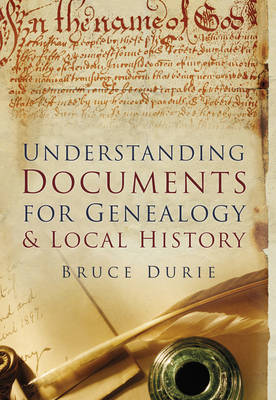
- Afhalen na 1 uur in een winkel met voorraad
- Gratis thuislevering in België vanaf € 30
- Ruim aanbod met 7 miljoen producten
- Afhalen na 1 uur in een winkel met voorraad
- Gratis thuislevering in België vanaf € 30
- Ruim aanbod met 7 miljoen producten
Zoeken
Omschrijving
Genealogists and local historians have probably seen every birth, marriage, death and census record available, and are adept at using the internet for research. However, once they have learnt everything they can from them, the next step is reading and understanding older documents. These can be hard to find (not many are online), are often written in challenging handwriting and use legal and other unfamiliar terms. Some will be in Latin, antiquated English or Scots. Readers need to be able to understand the nature and intent of a range of documents as well as the palaeography (the handwriting) and orthography (the 'shape' of the contents). In Understanding Documents for Genealogy and Local History, Dr Bruce Durie, the celebrated author of Scottish Genealogy, details how to find and comprehend documents from 1560 to the 1860s - wills, testaments, contracts, indentures and charters, land records (retours, sasines and manorial custumals), personal letters, official records, Church papers, trust dispositions, deeds and others. Also covered are the complexities of dates, numbers, calendars, measurements and money, abbreviations, transcription conventions, letter-forms and glossaries. A Latin primer completes the tool kit the genealogist and family historian will need to further their research.
Specificaties
Betrokkenen
- Auteur(s):
- Uitgeverij:
Inhoud
- Aantal bladzijden:
- 448
- Taal:
- Engels
Eigenschappen
- Productcode (EAN):
- 9780752464640
- Verschijningsdatum:
- 1/02/2013
- Uitvoering:
- Paperback
- Formaat:
- Trade paperback (VS)
- Afmetingen:
- 171 mm x 249 mm
- Gewicht:
- 1106 g

Alleen bij Standaard Boekhandel
+ 83 punten op je klantenkaart van Standaard Boekhandel
Beoordelingen
We publiceren alleen reviews die voldoen aan de voorwaarden voor reviews. Bekijk onze voorwaarden voor reviews.











